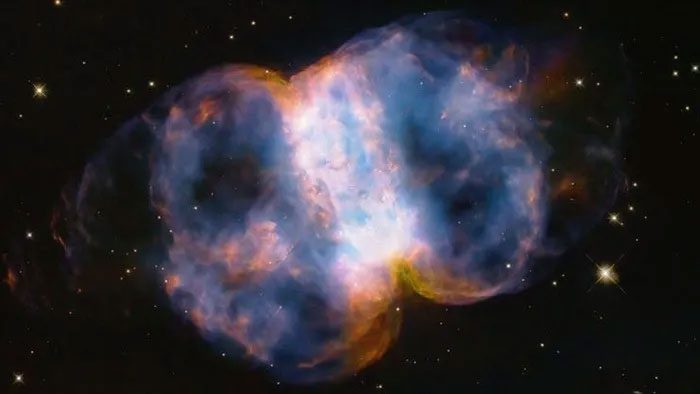The Hubble Space Telescope is regarded as a symbol of modern astronomy. Recently, on April 24, this famous telescope celebrated its 34th birthday. To commemorate this milestone, Hubble sent back to Earth a stunning image of the Little Dumbbell Nebula, also known as Messier 76 or NGC 650/651, marking a journey of fruitful exploration of the universe and opening up new horizons for the future.
The Little Dumbbell Nebula is located approximately 3,400 light-years away from Earth in the constellation Perseus in the northern sky. Although it is not as sharp and sensitive to faint infrared signals as the James Webb Space Telescope, Hubble has still managed to capture beautiful images, including its latest photo of the Little Dumbbell Nebula.

Stunning image of the Little Dumbbell Nebula captured by Hubble.
The Journey of Cosmic Exploration
Launched in 1990, Hubble is the most powerful telescope ever built, ushering in a new era for astronomy. Over the past 34 years, Hubble has conducted more than 53,000 observations, collecting a vast amount of data about the universe, contributing to the unraveling of many mysteries and leading to groundbreaking discoveries.
Hubble has provided humanity with a more detailed view of distant galaxies, the formation and evolution of stars, planetary collisions, and even the atmospheres of exoplanets. The breathtaking images from Hubble have inspired millions around the world and ignited a passion for cosmic exploration.
Impressive Records
In its 34 years of operation, Hubble has achieved numerous impressive records, including:
- The longest-operating telescope in space.
- The largest amount of data collected from a telescope.
- Contributions to over 44,000 scientific papers.
Although it has far exceeded its original expected lifespan, Hubble continues to operate effectively and serves as an invaluable research tool for astronomers. However, this telescope is facing some challenges.
Specifically, Hubble has exhausted its supply of spare parts since its last maintenance in 2009. Its orbit is also gradually decaying, which could lead to it re-entering Earth’s atmosphere in the future.
NASA is working to extend Hubble’s lifespan and ensure it continues to operate for many more years. Some plans under consideration include launching a servicing satellite to boost Hubble’s orbit, conducting another maintenance mission to replace critical components, and developing a new generation of space telescopes to succeed Hubble.
The Hubble Space Telescope has made a profound impact on the history of science and is a source of pride for humanity. With ongoing preservation efforts and new development plans, Hubble promises to continue delivering fresh discoveries and inspiring future generations.


















































